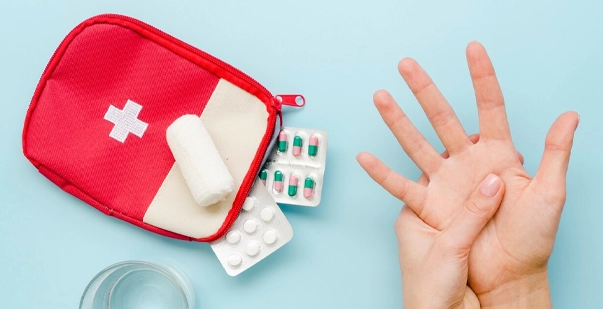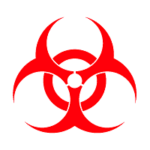Did you know that many people believe putting butter on a burn helps it heal faster? Yes, this is just one of the many myths about first aid, and it’s time we bust it. First aid is crucial in emergencies, but it’s important to do the right thing. Whether you want to treat a minor cut or handle a burn emergency, you must know the right technique. Here are 12 common first aid facts and myths to help you understand what really works.
Read the blog to explore the facts and myths:
Top 12 First Aid Facts and Myths
First aid facts offer a lot of information. While some are true, some are not. Some advice is based on medical best practices, while others are myths. So it is vital to know the differences between facts and myths to provide proper care during emergencies. Here are top 10 common myths and facts about first aid to help you understand what works and what does not.
Myth 1: Put Butter on Burns to Make Them Heal Faster
Fact: Butter or greasy substances can actually worsen a burn. There is a high risk of infection. They trap heat in the skin, causing more damage. The best way to treat a burn is by running cool (not ice-cold) water over it for 10-20 minutes. This helps reduce the temperature of the skin and eases pain. After cooling, cover the area with a clean, dry cloth or bandage. Avoid applying any greasy or oily substances. This myth likely persists as it offers temporary soothing relief.
Myth 2: Tilt your Head Back to Stop a Nosebleed
Fact: Tilting your head back can cause blood to go down your throat, which might lead to choking or vomiting. Instead, lean forward slightly and pinch the soft part of your nose, just below the bridge. Hold for about 10–15 minutes without letting go. This helps stop the bleeding by allowing the blood to clot. You can also apply a cold pack to the back of your neck to help narrow the blood vessels.
Also read: How to Stop Bleeding: A Guide to Stopping Bleeding
Myth 3: Suck Out Snake Venom to Remove it From the Wound
Fact: Sucking the venom out is not only ineffective, but it can also make things worse by spreading the venom faster through your mouth and bloodstream. Cutting the wound is ineffective and can increase infection risk. The best response is to keep the bitten limb still and lower than your heart to slow down the venom’s spread. Cover the bite with a clean, dry dressing, and seek medical help as quickly as possible. Immobilize the limb and get medical help promptly. Do not apply a tourniquet or ice to the wound.
Myth 4: Apply Ice Directly to a Burn to Cool it Down
Fact: Applying ice to a burn can damage the skin even further, as extreme cold may cause tissue damage. It can irritate the damaged skin. So use cool water right after a burn to help the skin heal. Instead, use cool water to gently bring down the skin temperature and soothe the burn. Cool water also helps prevent further injury and reduces swelling. After treating with water, cover the burn with a sterile, non-stick bandage or cloth to protect it. Never pop blisters that may form, as this can lead to infection.
Myth 5: Use Alcohol or Hydrogen Peroxide to Clean a Wound
Fact: Although these solutions are commonly used for cleaning, they can irritate the skin and delay healing by damaging healthy tissue. The best way to clean a wound is by rinsing it with clean water or a mild saline solution. Pat the area dry with a clean cloth, then apply an antiseptic ointment if needed. Cover the wound with a clean bandage to keep it safe from dirt and germs.
Myth 6: Slap Someone Who Has Fainted to Wake Them Up
Fact: Slapping someone who has fainted can cause injury or distress. Instead, help the person lie down on their back and raise their legs slightly to encourage blood flow to the brain. Lose any tight clothing, especially around the neck, and make sure they are breathing normally. If they don’t regain consciousness in a few minutes, seek medical assistance. Slapping or shaking is not helpful and could harm the person.
Myth 7: You Should Make Someone Who has Fainted Sit Up Right Away.
Fact: Making a person sit up too quickly after fainting can cause dizziness or lead to fainting again. Instead, it’s best to lay them down flat and elevate their legs slightly to help blood flow back to their brain. This position allows oxygen to quickly reach their head. This helps them to regain consciousness safely. Once they’re fully alert, they can slowly sit up. But it’s important to give their body time to recover first.
Myth 8: CPR Always Brings People Back to Life, Like in Movies
Fact: CPR is a critical life-saving skill, but it doesn’t always restart the heart or bring someone back immediately. Its main goal is to keep blood and oxygen flowing to vital organs until emergency medical professionals can arrive and take over. Using an AED improves chances of getting the heart beating normally again. Even if CPR doesn’t bring someone back right away, it significantly improves their chances of survival. It’s important to start CPR as soon as possible in a medical emergency.
Myth 9: Encourage Vomiting if Someone Swallows Poison
Fact: Vomiting can cause more harm than good, especially if the substance is toxic. Rather call emergency services or a poison control center and seek guidance to handle the situation safely.
Myth 10: Use a Tourniquet Immediately for any Severe Bleeding
Fact: This is one among other facts about first aid. A tourniquet is a very powerful tool, but it should only be used as a last resort because it can cause damage to tissues and nerves if applied incorrectly or for too long. For most severe bleeding, direct pressure on the wound with a clean cloth is the best first response. Hold pressure until the bleeding stops, and only use a tourniquet if the bleeding is uncontrollable and life-threatening.
Myth 11: Hold Down Someone who is Having a Seizure to Stop Them
Fact: Restraining someone during a seizure can cause injuries to both them and the person trying to hold them down. Instead, make sure the area around them is safe from moving objects that could hurt them. Don’t put anything in their mouth. After the seizure ends, gently turn them on their side to help keep their airway clear. Most seizures last just a few minutes, but call for medical help if it continues longer.
Myth 12: Pop Blisters that Form on Burns to Help Them Heal
Fact: Popping blisters exposes the skin to infection. Blisters form as the body’s natural way of protecting the damaged skin underneath, and they should be left intact. Keeping blisters unpopped helps keep the skin moist that speeds up healing. Instead of popping them, cover the area with a clean, sterile bandage. If the blister breaks on its own, keep the area clean and apply an antibiotic ointment to prevent infection. Check large or painful blisters from a doctor instead of treating them at home. Let the body heal naturally to avoid further complications.
Why is First Aid Knowledge Important?
First aid knowledge helps you respond quickly and correctly in emergencies. It can prevent further injury and save lives. It reduces recovery time and prepares you with the right skills to act during emergencies. Here is why first aid knowledge is important:
Saving lives
Knowing first aid allows you to act immediately during critical situations. Performing CPR before medical professionals can increase a person’s chance of survival during cardiac arrest. Respond quickly to prevent a situation from worsening. It helps you buy valuable time. So simple actions such as stopping bleeding or clearing an airway can make the difference.
Prevents further injury
Proper first aid stabilizes a person’s condition and prevents major injuries. So if you know how to immobilize a broken limb, you can prevent damage. Incorrect actions, such as moving someone with a spinal injury, can cause permanent damage. It teaches you ways to handle injuries while protecting the person from any other harm. It reduces the severity of injuries.
Reduces recovery time
Immediate and appropriate first aid can help you fasten the healing process while reducing recovery time. Treat wounds well to prevent infections and complications. For example, when you use the right method to cool a burn, it helps to heal the skin and reduces scarring. Quick action can prevent injuries from becoming severe.
What are the Common First Aid Mistakes to Avoid?
When it comes to first aid, people tend to make mistakes that may worsen the situation. You must know what to avoid and what to do. Here are common first aid mistakes to look out for:
- Mistake: Using ice directly on a burn.
Ice can cause further damage to burned skin by freezing the tissue and increasing pain. Instead, cool the burn with running water for 10–20 minutes. This helps soothe the burn and reduce the risk of complications. Avoid applying ice or butter, as these can trap heat and slow down healing. Putting ice on a burn can cause frostbite making the injury worse. After cooling the burn, it’s important to keep it clean and covered to prevent infection and more irritation.
- Mistake: Trying to move someone with a suspected back or neck injury.
Moving a person with a possible spinal injury can cause permanent damage. If you suspect a neck or back injury, keep the person still and wait for emergency services. Stabilize their head and neck if necessary to prevent further injury. Only move them if they’re in immediate danger, like a fire.
- Mistake: Not cleaning a wound properly before bandaging.
Failing to clean a wound can lead to infection and slow the healing process. Gently rinse the wound with clean water to remove dirt or debris before applying a bandage. Using alcohol or hydrogen peroxide can damage the skin, so stick to water and mild antiseptic creams. Always cover the wound with a clean dressing to protect it.
- Mistake: Tilting the head back during a nosebleed.
Tilting the head back during a nosebleed can cause blood to flow into the throat, which may lead to choking or swallowing blood, causing nausea. The correct method is to lean slightly forward and pinch the soft part of your nose for about 10–15 minutes. This helps stop the bleeding by applying pressure to the affected blood vessels. Remember not to tilt back or lie down, as this could worsen the situation.
- Mistake: Giving water to someone who is unconscious.
Trying to give water or food to an unconscious person can lead to choking, as they may not be able to swallow properly. If someone is unconscious, the best thing to do is lay them on their side in the recovery position. This helps keep their airway open and prevents choking. Always call for medical help and monitor their breathing until help arrives.
Also read: Sunburn First Aid Tips: How to Treat Sunburn
Be Prepared to Save a Life
Knowing first aid is a crucial skill and can make a life-saving difference in emergencies. Understand the first aid facts and avoid common myths to handle situations such as cuts, burns, and cardiac arrest. Quick actions can prevent injuries and help improve situations. Be equipped to provide first aid and practice these essential skills. So do not delay, and learn first aid today.






